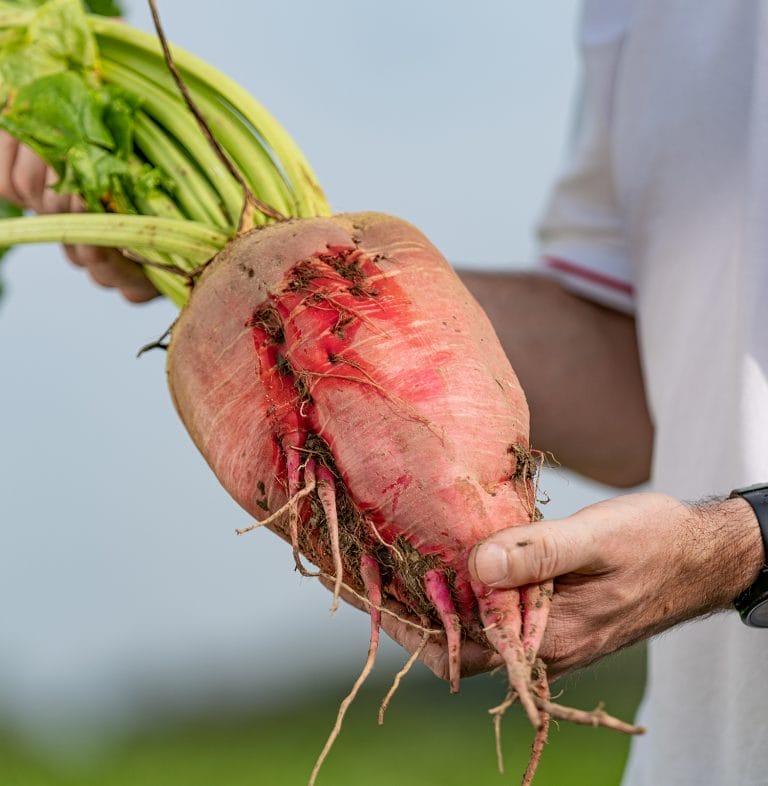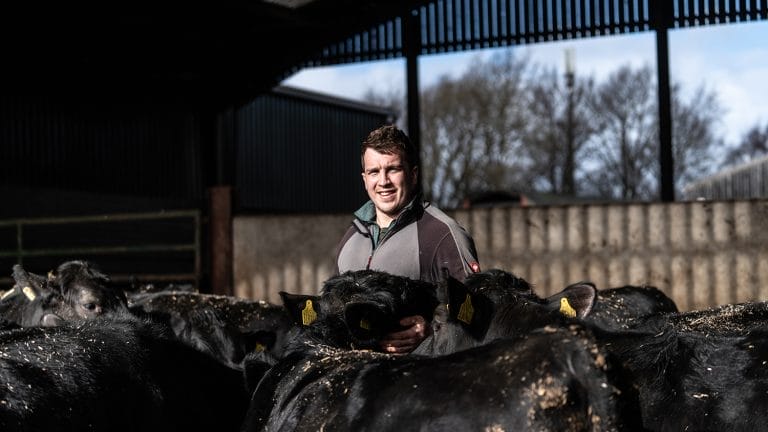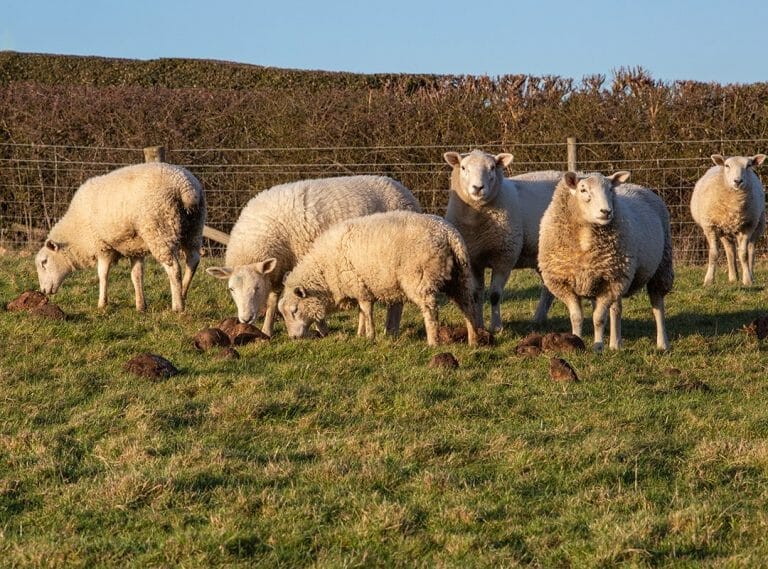Many silage clamps are still well stocked this spring, after 2019’s bumper grass crop. This presents producers with a rare opportunity when it comes to improving the quality and productivity of their grass leys.
“Producers might be tempted, because they still have plenty of silage in the clamp, to skip reseeding a proportion of their grassland this spring,” says Limagrain’s Ian Misselbrook. “But it’s a great opportunity to do a stocktake and make some real improvements to grassland productivity.
“Having more forage in the clamp offers a safety net. There’s a good buffer, so it’s a rare chance to do more reseeding and grassland renovation than in the past few years.” Mr Misselbrook fears that some producers will be behind with reseeding after a few tricky grass growing years, due to a late spring in 2017 and a dry summer in 2018.
Remedial action
“The recommendation is to reseed 20% a year but, in reality, many are doing far less and skipping some years. Reseeding regimes and plans are out of kilter on many units, which is far from ideal, so for many, now is this time to catch up.” The goal is to maximise the farm’s potential in producing the best-value feed – grass. And that starts with productive leys, packed with good quality grass varieties.
Grass leys are at their most productive in their second year. Fall off is gradual but, by year five, a ley’s productivity will be just 50% of year two. A reseed will pay for itself in a year, depending on the condition of the resulting ley.
As a ley ages, grass weeds could will compete with and replace ryegrass varieties. “That said, don’t simply assume that it’s your oldest leys that will need to be reseeded. It’s important to assess the leys by eye and base decisions on the grass species that you see.
“And don’t assume that a lush green sward is the most productive or efficient,” stresses Mr Misselbrook.
Just such a sward may fill the silage trailer or offer a decent bite of grazing, if the percentage of weed grasses – such as annual meadow grass or Yorkshire fog – are too high then the quality and yield of the resulting forage will be compromised.
Ryegrass plants
He recommends that producers walk their leys and examine what’s there. “Look for gaps and broadleaved weeds, obviously, but also look at the grasses. “Don’t worry about identifying the individual grass weeds. What’s key is being able to spot the ryegrass and to then evaluate the proportion of it in a sward.”
Spotting perennial ryegrasss is quite easy. “Look for grass plants with a purple base and folded leaves, which are shiny on the inside and matt on the outside. And examine a square metre of grassland. You’re looking for more than 70% of the grass plants to be perennial ryegrass – any less then productivity begins to be significantly compromised and reseeding will yield a significant return on investment.”
If the perennial ryegrass content of a sward is between 70% and 80%, then overseeding – rather than a full reseed – can renovate a ley and extend its productive life.
There are also significant gains to be made from using high-quality grass mixtures. “This can make a real difference. I’ve often heard producers say that a reseed hasn’t taken and they often blame the weather or the soil. But it’s typically because they’ve taken a standard ‘off the shelf’ mixture – and little, if any, agronomy advice. The mixture is the problem.
“So always buy from a reputable merchant, and one that sources seed mixtures from a recognised seed house. Look out for LGAN accreditation, to show that a mixture meets both growing and feeding criteria,” says Mr Misselbrook.
“And, when selecting a mixture, remember it’s not just about the species within the mixture, it’s how they’re mixed – the proportions and the formulation. Varieties have a complementary action in a mixture. And there’s more to it than simply putting the best varieties on the recommended list together.”
“A high proportion of tetraploid ryegrasses are important in a grass seed mixture for dairy leys – both for grazing and cutting – because they’re more drought tolerant than diploids. The latter are important in terms of putting a ‘bottom’ into the ley, but tetraploids are key to building resilience and stamina into a ley. And they’re also faster to establish.”
Mixture selection
When choosing a mixture, it’s also important to consider what they ley will be used for – grazing, cutting or a combination.
 “Many producers simply opt for a general purpose mixture and, typically, this will do the job. But there are productivity gains to be had if, for example, you know an out-lying field will only ever be cut for silage or zero grazing. Reseeding with a mixture that’s formulated for cutting, rather than grazing, will be beneficial and offer better yields and quality for silage.”
“Many producers simply opt for a general purpose mixture and, typically, this will do the job. But there are productivity gains to be had if, for example, you know an out-lying field will only ever be cut for silage or zero grazing. Reseeding with a mixture that’s formulated for cutting, rather than grazing, will be beneficial and offer better yields and quality for silage.”
Mr Misselbrook cites Turbo, a ‘leafier’ mixture that’s ideal for grazing early- to mid-season, but great for a cutting later in the summer. Prosper, conversely, is the ideal choice for producers who want to take one or two cuts of silage and then graze a good quality aftermath.
Grass breeding
“It’s well worth having a conversation with your agronomist or seed merchant about exactly what you want from a ley and to take advice to help you select a ‘best fit’ mixture.”
And make sure that the mixture offers quality – not just yield. “Grass breeding has come a long way during the past 10 years. Digestible NDF is key to feeding the rumen bugs and it’s a bigger driver for a high ME, in grazed grass and grass silage, than sugars,” says Mr Misselbrook.
Better quality mixtures offer higher yields and feed quality and make reseeding even more cost effective and producers should look to take advantage of the accredited seed mixtures that are on offer. “Look out for LGAN accreditation when buying seed as a guarantee of testing and quality.”
The return on investment is 10:1 for a five-year ley, with reseeds breaking even in the first year. Productivity will peak in the second growing year, which will be 2021 for 2020 reseeds.
Ensuring that swards are in tip-top condition means that they’ll be better able to weather whatever mother nature has in store – this year and looking further ahead.
“Grass is the core of all home-grown forage production – and the foundation of all dairy businesses,” he adds. “And heading into 2021 with leys that are at their productive peak will offer producers peace of mind that, however 2020 pans out, grassland will be poised to help maximise returns and mitigate any other challenges – environmental or political – that dairy businesses may face.”


































